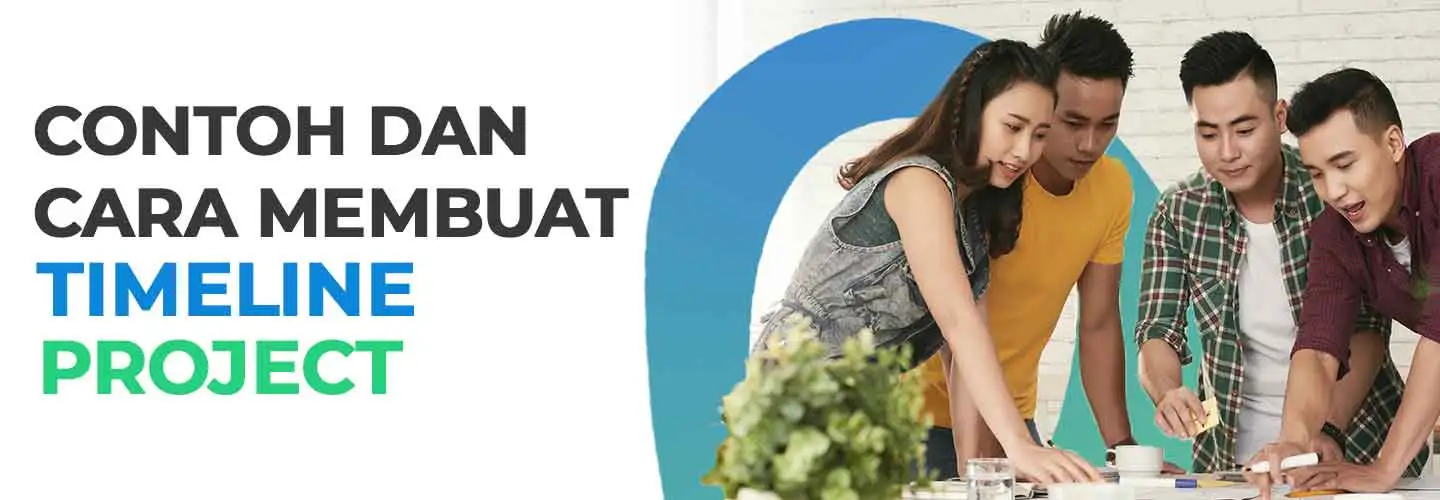8 Steps to Create a Detailed Project Timeline and Examples

A clear project timeline will help your team succeed in running a project. Therefore, you must understand how to create a sample project timeline.
A project timeline is a picture of the entire project starting from tasks, those responsible, targets, achievements, to deadlines. This visualization helps everyone involved in the project to stay focused and organized.
Here we explain the types, how to create, and examples of project timelines that you can use.
8 Steps to Create a Project Timeline
Summarizing Lucidchart, here are eight ways and stages to create a project timeline.
Identify the scope and objectives of the project
The first step in creating a project timeline is to prepare the scope, objectives, and your expectations for the project. You and your team must hold a project preparation and planning meeting before forming a project timeline. By having a clear and detailed project scope and objectives, your team will understand the impact of the project and its targets from the start.
Structure the project and divide it into phases
The project structure is the most important part of the project timeline, because in it you have to divide the scope and objectives or targets of the project into small phases. This group of phases will later be used as a reference for project achievement.
Determine the tasks of each phase
The phase group will be further divided into various tasks that are divided into each team or person in charge. In the process of dividing tasks and responsibilities, you can discuss with team members, internal stakeholders, and external (if needed in the project). The goal is for each person in charge to know the portion and expectations of their work results.
Determine the parties involved and project needs
Regarding the division of responsibilities, a project requires assistance from internal stakeholders or even external parties. So, in preparing the project timeline, your negotiation skills will be tested. The process of asking for help and aligning the mindset for the project timeline are two crucial things to ensure the project runs smoothly.
Determine the total project time
Knowing the total project time will give you a clear timeline and deadline. This also anticipates delays that can be detrimental to the team or company. However, in determining the total work time, you can predict certain periods such as leave, holidays, weekends, and unexpected things. Also make sure the total time specified is reasonable and can be achieved by the team.
Identify project resources
Project resources can be:
- key visuals for design
- type of copy used
- applications or equipment needed
- project budget
- who is responsible and their deadlines
- banners and promotional content
Usually resources will increase as the project progresses.
Determine project targets and milestones
The goals, scope, structure, and phases of the project that you have created will shape and adjust the overall project targets. Targets must be in the form of numbers or quantitative so that their success can be measured. You must also create small achievements for each phase group. Not only to find out the progress of the project, but also to give appreciation to the team.
Create a project timeline
The last is to create a detailed and complete project timeline. This project timeline will be the main reference for everyone involved in running the project. To create a project timeline that is easy to read and understand, see the following example.
Types and Examples of Project Timelines
Quoting Asana, here are some examples of project timelines that you can use:
Example of project timeline in gantt chart
Gantt chart is known as one of the forms of timeline that is often used by project managers. With this model, the team can find out the project phases and their deadlines in detail.
This also gives the team an understanding that a phase must be completed on time in order to continue to the next phase. Here is an example of a project timeline in a gantt chart:
Source: teamwork.com
Example of project timeline in a vertical chart
The vertical chart model is a simplified version of the gantt chart. You just write down the various project tasks in a straight line (vertical). In this model, you do not need to enter the duration or timeline details.
This model is suitable if the project is related to a seminar or workshop. Check out the following example of a project timeline in a vertical chart:
Source: plaky.com
Example of project timeline in Kanban timeline
You need additional applications to use this model. However, Kanban is known as one of the superior project management timeline applications. You and your team can also use Kanban easily.
In a Kanban board, you simply divide tasks into “ongoing tasks” and “completed tasks” columns. Here is an example of using the Kanban timeline:
Source: kanbantool.com
Example of a project timeline in a historical chart
This model sorts tasks based on the project timeline sequence. Usually used for projects that run for several months. The main information included in this chart is tasks, those responsible, and achievements.
An example of a project timeline in a historical chart is:
Source: plaky.com
Benefits of Creating a Project Timeline
Reporting from TeamWork, here are some of the benefits of creating a project timeline:
- Have clear goals, scope, and how to achieve goals.
- Ensure everyone has the same mindset and goals.
- Ensure everyone involved gets the information they need.
- Be a reference when problems occur in one phase.
- Avoid delayed tasks or phases.
- Make it easier for everyone when there is a change in phase or timeline.
In order for the project to run smoothly and achieve success, you need a detailed project timeline. Not only for you, but all team members and other parties involved also understand their roles and expectations for their work results.
Both managers and staff must understand the importance of a project timeline and how to create it. You can learn everything about the process of managing operational and non-operational projects in a short program from Prasmul-Eli.
In The Real Project Management training, you will get knowledge and courses directly from industry experts and professionals. Click this link to find and register for the program!
